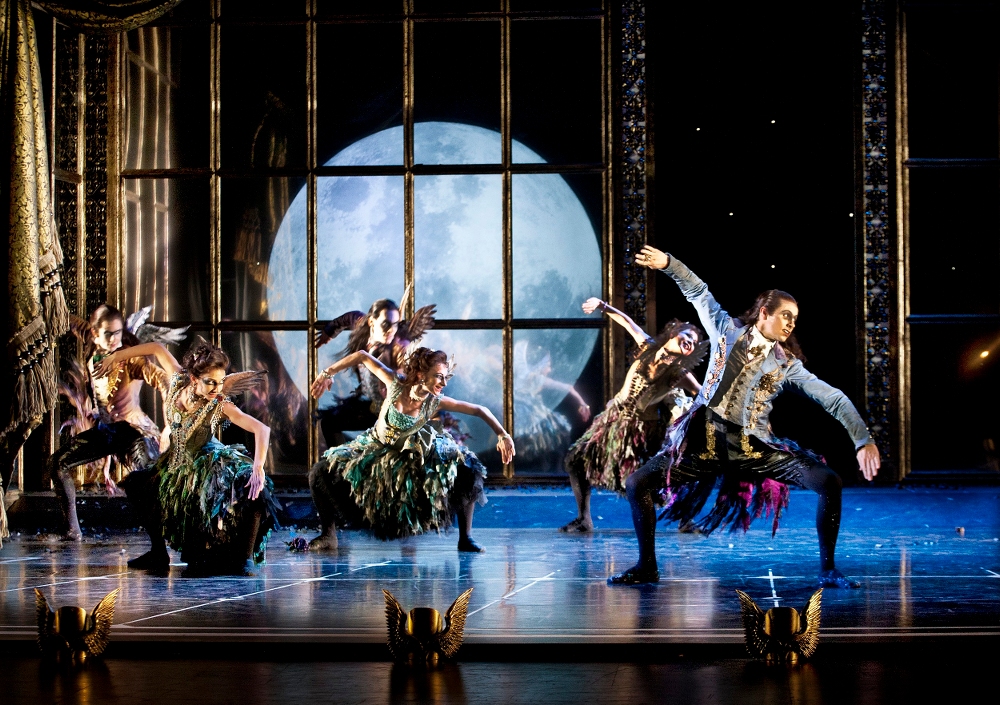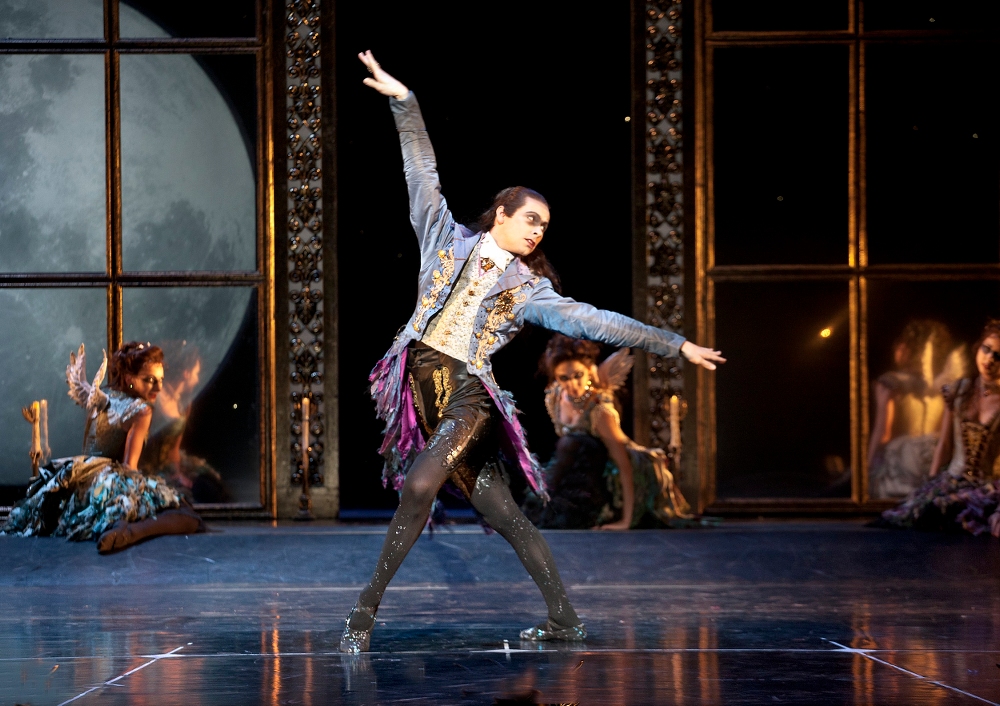It depends what you expect. This is Matthew Bourne’s Sleeping Beauty. So what do you expect of (a) Matthew Bourne and (b) The Sleeping Beauty? On both counts I’d answer: much more than we get here. Bourne at his best is brilliant - his Swan Lake, his Play Without Words, are two of the most rewarding and entertaining (I mean moving the heart, as well as hugely gratifying the visual palate) shows in dance in the past generation. His Nutcracker! is young, sexy and amusing. His Cinderella came back, revised, two years ago with a poignancy that evidently touched deep into his love for his parents’ generation and their wartime youth. Some of his early stuff remains as funny and saucy as when it was made 25 years ago.
What drives this Sleeping Beauty? Well, it’s completing the trilogy of the great Tchaikovsky ballets - just what the marketing department ordered, and though I grant nobody would embark on so complex and costly an enterprise purely on that basis, for this spectator it was hard at last night's London premiere to grasp any other imperative. Unlike Nutcracker! or Swan Lake, it is not fashioned to amuse nor is it instinctively heart-felt. It exposes a choreographer who did it because he ought to, not because he just had to.
 Plot-making is generally Bourne's strength, putting witty twists into familiar scenarios in order to get laughs or apt modern emotional insights. But The Sleeping Beauty has no narrative plot - it’s a series of situations: cursed baby temporarily reprieved, grown girl doomed, boy helped to wake her, everyone happy, but no laugh potential. Grisly early versions of the tale were more folk horror than fairy romance, with the prince raping the sleeping princess and making her pregnant, a dark underworld left uneasily in place. Bourne tells us, in the opening title projection, that Carabosse isn't a nasty witch, she gave the childless king and queen a miracle baby, and they weren't sufficiently grateful. So is this about a good and misunderstood Carabosse and rude Royals who deserve what they get? A promising Bourne-like line - but nothing happens with it.
Plot-making is generally Bourne's strength, putting witty twists into familiar scenarios in order to get laughs or apt modern emotional insights. But The Sleeping Beauty has no narrative plot - it’s a series of situations: cursed baby temporarily reprieved, grown girl doomed, boy helped to wake her, everyone happy, but no laugh potential. Grisly early versions of the tale were more folk horror than fairy romance, with the prince raping the sleeping princess and making her pregnant, a dark underworld left uneasily in place. Bourne tells us, in the opening title projection, that Carabosse isn't a nasty witch, she gave the childless king and queen a miracle baby, and they weren't sufficiently grateful. So is this about a good and misunderstood Carabosse and rude Royals who deserve what they get? A promising Bourne-like line - but nothing happens with it.
More disappointingly, he has mostly ducked the challenge of the mighty majesty of the music. The genius of the masterpiece that Tchaikovsky created in music was how potently it makes you feel inexpressible things, swelling with unbelievable exhilaration, held tense as panic builds, or lulled by magical siren sounds. The set pieces, such as the opening christening, or the great Rose Adagio, are shaped in an architecture as monumental and classical as a great building; and they’re interspersed with brief, delectably ornate 90-second numbers that stand separately from each other, like bonnes bouches between the grand courses.
Extravagantly shredded fairies hover in a gothic fantasy between early photographs and Liberty’s haberdashery
On the evidence of the amount of pilfering that he does here from Petipa’s great 19th-century ballet and Frederick Ashton’s 20th-century fairy tales, Bourne yearns to choreograph a “real” ballet. He can't do much with his magpie snacking, lacking any extensive vocabulary to muster a real, sustained dance language to match the music. It means the show is even more than usual led by Lez Brotherston’s superlatively decisive designs.
Into a palace of sooty golden drapes glide - on a travelator - some extravagantly shredded fairies from a gothic fantasyland that seems to hover in colour between early photographs and the exotic riches of Liberty’s haberdashery. There’s an ingeniously compacted Edwardian garden scene complete with Downton-esque vista and giant weeping angel statue. Regrettably, the century skip required in the story dumps us down at the end in 2011, the era of Milletts sales and Cheryl Cole glama.
 Above: Christopher Marney as Count Lilac - Bourne's rewrite of the Lilac Fairy
Above: Christopher Marney as Count Lilac - Bourne's rewrite of the Lilac Fairy
As usual, Bourne offers expert stagecraft and clever ideas. The baby Aurora of the opening is a cute manipulated puppet, crawling around her darkling 1890 palace, getting under the flunkeys’ feet. She is much missed when she grows up to be 21 in the next scene, and is played by Hannah Vassallo as a goofy girl whom we first see waggling her legs in the air and showing us her bloomers.
A whole gaggle of references and campy recharacterisations jostle about as Bourne tries to give his rewrite frissons of Dracula and Twilight - Christopher Marney makes a suave Count Lilac but it seems to be intended that we’re more interested in Dominic North’s “prince” figure, a dull gamekeeper who for obscure reasons gets bitten by Count Lilac and then time-travels around with a neat little pair of wings on his back. One superb scene stands out in the inconsequentiality: where Carabosse (the imposing Ben Bunce) enacts with a masked Aurora the cursed fate lying ahead, and Bourne adds some urgent visionary drive to his pantomimic style of movement to generate a taut mini-thriller.
Nothing much elsewhere is as sexy, probably because there is no scope for gay duets, in which Bourne has always been far more evocative than in boy-girl ones - the Rose Adagio music, where Aurora’s romantic readiness should reach ecstatic, awesome heights, just has two dopey youngsters fooling about like kittens playing. Without symbolic coherence, or compelling stage possession, this Aurora is a bit of a nobody.














Add comment